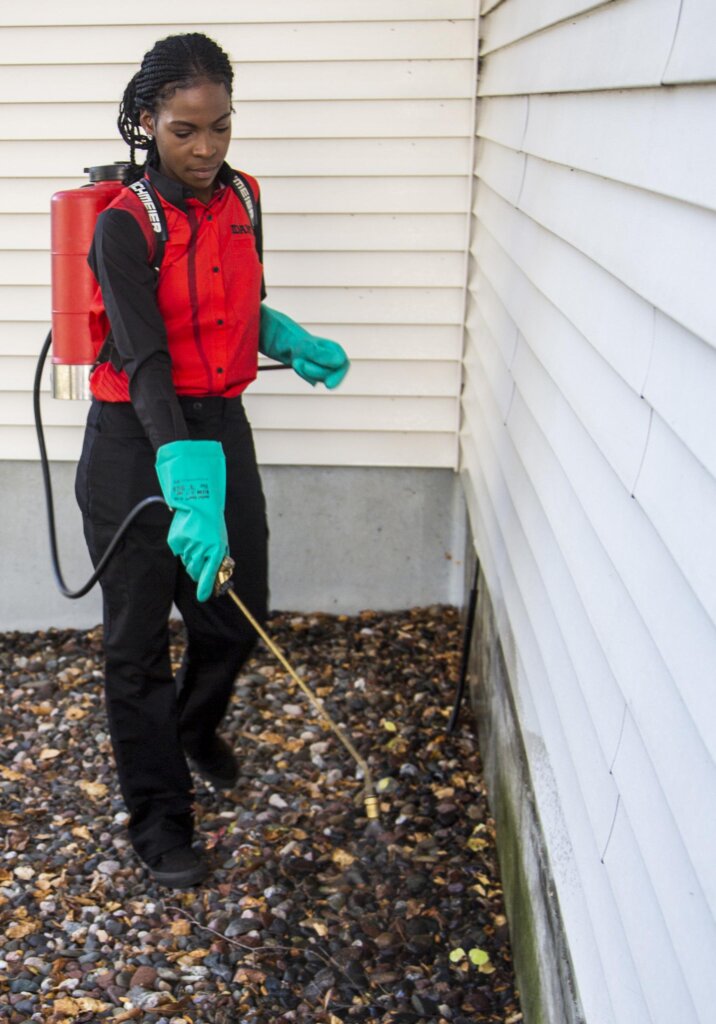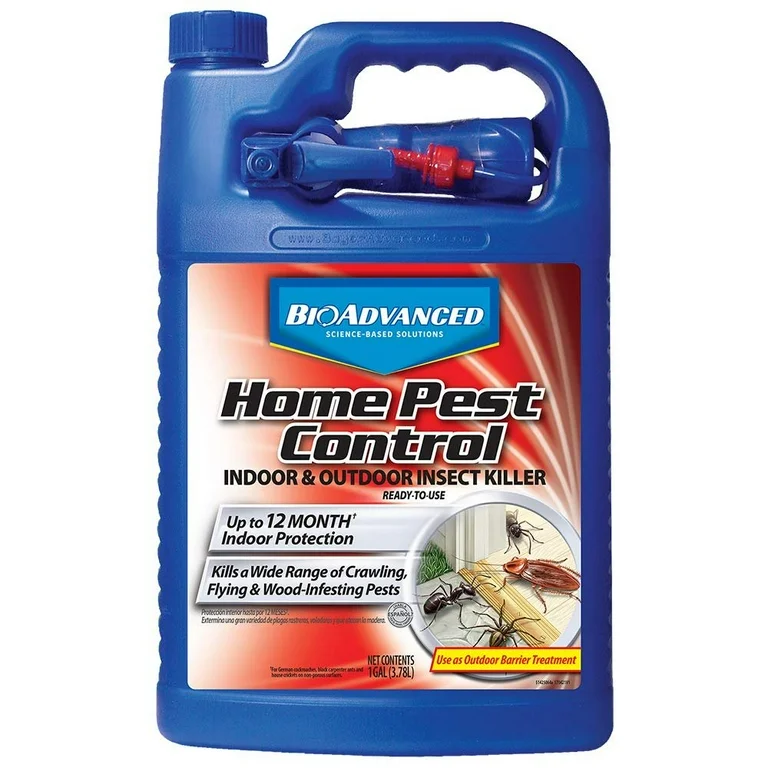Trusted A1 Exterminator Charlotte NC - Comprehensive Pest Solutions
Trusted A1 Exterminator Charlotte NC - Comprehensive Pest Solutions
Blog Article
Bed Pest Therapy Breakdown: Contrasting Chemical Vs. Non-Chemical Solutions
In the world of pest control, especially when managing the persistent issue of bed insects, the selection in between chemical and non-chemical therapy solutions can be an essential one. Both strategies provide unique advantages and downsides, influencing variables such as efficiency, safety factors to consider, and total price. By analyzing the nuanced information of each method, a more clear understanding of which course to go after in resolving a bed insect infestation can be obtained.
Efficiency of Chemical Therapies
Chemical treatments for bed pest problems have actually been commonly acknowledged for their fast and potent efficacy in eradicating these insects. When thinking about the effectiveness of chemical therapies, it is vital to comprehend that they can provide a comprehensive and fast service to a bed pest issue.
Moreover, chemical treatments have the benefit of providing recurring impacts, suggesting that they can remain to remove bed insects even after the initial application. This recurring action is especially helpful in combating any kind of prospective re-infestations. Furthermore, the fast action of chemical therapies can bring alleviation to people facing severe bed bug problems, permitting them to gain back control of their home promptly.
Safety And Security Issues With Chemical Solutions
One critical aspect that calls for mindful factor to consider when utilizing chemical solutions for bed insect treatment is guaranteeing the security of passengers and the setting. While chemical treatments can be effective in eliminating bed pests, they might posture threats otherwise managed effectively. Among the key safety issues with chemical options is the prospective damage they can trigger to human health and wellness. Direct exposure to certain chemicals used in bed insect treatments can bring about respiratory system issues, skin irritation, or other unfavorable responses, specifically in people with pre-existing conditions or sensitivities. In addition, inappropriate application or dose of chemical pesticides can cause toxic residues remaining in the treated area, positioning long-lasting health and wellness threats to passengers.
Furthermore, the environmental effect of chemical options is an additional substantial consideration. Some pesticides utilized in bed insect therapies might be unsafe to beneficial bugs, wild animals, and ecological communities if they leach right into the soil or water supply. It is crucial to utilize chemical therapies deliberately, complying with safety and security guidelines, and considering much less hazardous options to mitigate these threats and make sure the effective and risk-free management of bed insect invasions.
Benefits of Non-Chemical Strategies
Taking into consideration the possible security worries and environmental influence linked with chemical services for bed pest therapy, discovering non-chemical strategies presents a promising option with several distinct advantages. Non-chemical treatments are eco safe pest control friendly, as they do not contribute to air or water air pollution, making them a lasting option for parasite control.
Additionally, non-chemical options can be reliable in targeting bed bugs, including hard-to-reach areas where chemical treatments might not pass through - A1 bed bug exterminator charlotte. Approaches such as warm therapy, vacuuming, heavy steam cleaning, and cushion encasements provide detailed removal without the usage of unsafe chemicals.
Limitations of Non-Chemical Treatments

In addition, non-chemical therapies frequently call for multiple applications to accomplish successful removal. This can be lengthy and might not always assure complete removal of all bed insects and their eggs, specifically in concealed or hard-to-reach places.
In addition, the success of non-chemical therapies heavily relies on appropriate implementation and thoroughness, which can be testing for individuals without expert competence. Poor application of non-chemical techniques may lead to insufficient obliteration, resulting in consistent infestations and the need for additional treatments.
As a result, while non-chemical treatments have their advantages, it is blog important to recognize these constraints and consider them when establishing the most effective approach for handling bed insect problems.
Expense Contrast: Chemical Vs. Non-Chemical Options
Offered the constraints related to non-chemical treatments, an essential facet to review in the context of bed pest administration is the price contrast in between chemical and non-chemical options. Chemical therapies generally include the application of pesticides by professionals, which can range from $250 to $900 per space, relying on the severity of the infestation and the size of the location to be treated. In contrast, non-chemical therapies like warmth therapy or vapor can be extra costly, with costs ranging from $1,000 to $6,000 for a whole home. While the initial price of chemical treatments may appear reduced, multiple therapies may be required to fully eliminate the invasion, potentially raising the general cost. On the various other hand, non-chemical alternatives might offer a much more eco-friendly and lasting remedy, although they can be cost-prohibitive for some people. Inevitably, when thinking about the price of bed insect treatment choices, it is essential to consider the in advance expenditures versus the performance and long-term sustainability of the picked technique.
Verdict

Taking into consideration the prospective safety and security issues and ecological effect associated with chemical options for bed insect therapy, discovering non-chemical strategies presents an encouraging choice with a number of distinct advantages.Offered the restrictions connected with non-chemical therapies, an important aspect to review in the context of bed bug administration is the price comparison between chemical and non-chemical choices. In comparison, non-chemical therapies like heat therapy or steam can be more expensive, with costs varying from $1,000 to $6,000 for a whole home. While the preliminary expense of chemical therapies may appear lower, numerous therapies might be needed to completely eliminate the invasion, potentially raising the total cost.In final thought, when comparing chemical and non-chemical bed insect treatment options, it is vital to think about performance, safety and security, benefits, limitations, and expense.
Report this page